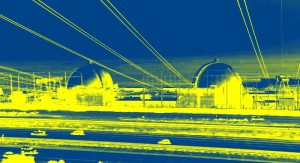 PART TWO – SAN ONOFRE’S RISKY BUSINESS
PART TWO – SAN ONOFRE’S RISKY BUSINESS
SONGS’ phantom security in the danger zone
The San Onofre Nuclear Generating Station doesn’t suffer hurricanes, tornadoes or flooding. But it does sit close to the San Andreas Fault. A recently discovered southern extension of the Newport/Inglewood earthquake fault just two miles off the coast of SONGS makes the dry casking of long-overdue spent fuel rods even more urgent. That rupture fault is capable of generating a 7.4 magnitude earthquake which is 2.5 times stronger a 7.0 which is what SCE says the plant can withstand.
SONGS vulnerability to a tsunami that could be generated by such an earthquake offshore is, however, low. The plant has a seawall that is 30 feet high at low tide but only 14 feet at high tide. The earthquake and resultant tsunami that took out Fukushima Dai-ichi in Japan March 11, 2011 causing an ongoing triple meltdown was 43 to 49 feet high. The good news is that the strike-slip fault offshore is an unlikely source for a tsunami because little ocean water is displaced during an earthquake. It’s the shaking that’s the concern.
“Tsunamis that can be produced by an earthquake in a subduction zone are projected to be larger than those resulting from earthquakes in a strike-slip fault system, such as the Newport-Inglewood/Rose Canyon faults near San Onofre,” Southern California Edison says on its SONGS community website. “San Onofre was built to withstand a peak ground acceleration of 0.67g (g refers to the force of gravity). The maximum ground acceleration experienced at Dai-Ichi was 0.561g in a horizontal direction.”
These SCE figures on SONGS’ foundational strength are reassuring. Having both reactors now defueled is also comforting because a huge earthquake and unlikely tsunami that could impact San Onofre is no longer a threat to the reactors.
The spent fuel pools, in buildings adjacent the two concrete domes of Units 2 and 3, are another matter entirely. If “The Big One” severely impacts infrastructure in Southern California near the plant, getting fuel to cool the spent fuel pools, assuming they are intact and haven’t leaked from cracking, could be a huge challenge.
“They need to decommission all of SONGS and dispose of its rad material in licensed radioactive waste disposal sites,” Daniel Hirsch of the nuclear watchdog group Committee to Bridge the Gap told EnviroReporter.com. “My greater concern is that SCE will try to defer decommissioning for half a century or more. There is no assurance SCE will even exist then, or that the decommissioning fund will still be intact or enough, given the uncertainties of inflation, increased costs of doing the work, disposal, etcetera. The high level waste–the spent fuel rods–has no place to be disposed of at present and will have to be put into dry cask storage on site for an extended period.”
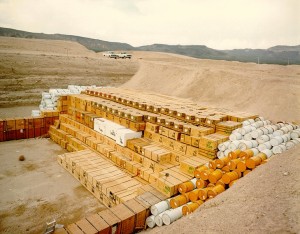 Except for the fuel rods, everything else on the site will be considered “low level” radioactive waste, Hirsch said. There is a dump in Utah for the Class A waste which is the lowest in concentration of isotopes. A new west Texas dump takes Class A, B and C waste from the state and Maine though it hopes to become the go-to dump for the entire country. It’s owned by Texas billionaire Harold Simmons who is close to Republican Governor Rick Perry.
Except for the fuel rods, everything else on the site will be considered “low level” radioactive waste, Hirsch said. There is a dump in Utah for the Class A waste which is the lowest in concentration of isotopes. A new west Texas dump takes Class A, B and C waste from the state and Maine though it hopes to become the go-to dump for the entire country. It’s owned by Texas billionaire Harold Simmons who is close to Republican Governor Rick Perry.
Even before the SONGS shutdown, radioactive material was removed from the plant and transported across California, Nevada and Utah. EnviroReporter.com has learned that at least one of four huge steam generators already removed from SONGS and transported to Clive Utah as Class A lightly radioactive waste was actually hotter than its rating suggests.
Each 700,000 pound generator was moved on separate trips during 2011 and 2012 for the over 800-mile trek. A one of a kind 192-wheel trailer was constructed to haul the radioactive load taking 21 days to reach the low level radiation dump. Edison officials repeated the claim to media that the vessel was harmless. Making sure the vessel didn’t rupture was paramount.
“There is a slight bit of radioactivity to it,” SCE’s Scott Andresen told ABC November 5, 2012. “But if you stood next to it for an hour, you’d get about the same amount of radioactivity you do when you get a dental X-ray.”
San Clemente environmental activist Gene Stone decided to check out how hot the behemoths really were November 29, 2012. Stone, the leader of the San Clemente-based Residents Organized for a Safe Environment (ROSE), drove his car alongside but about 100 feet from the vessel with a nuclear radiation monitor on his passenger car seat with the camera rolling. Stone’s videotape shows his detector surging over 18 times background radiation for 19 seconds as the car drives by the unseen vessel.
This is a remarkably-high reading at this approximate distance through a steel car door. Stone’s nuclear radiation monitor would have detected far higher ionization had it been aimed at the door, and the vessel beyond, instead of resting on his passenger seat as it was because of the plane of the detector. It would have really gone off if he had a passenger holding it out of the car aimed at the hot and huge steam generator. Regardless, this is an extraordinarily high reading for a giant piece of SONGS equipment that was repeatedly described as benign.
The California Highway Patrol considers anything over three times background a hazardous materials incident tripwire level according to a hazmat report obtained by EnviroReporter.com. The four old steam generators, which began their trip to Utah in Oceanside south of SONGS, each traveled the hundreds of miles through California, Nevada and Utah without incident other than the fact that it was radiating at considerable levels the entire time.
The decommissioning of San Onofre will take hundreds if not thousands of these “low-level” radioactive waste shipments. Only the really hot stuff will remain at the site eventually because of no available national high level waste dump.
The intense gamma radiation from the vessels is not only worrisome for its capacity for harm to unsuspecting workers and bystanders. SCE’s credibility is also at stake once again. Benignly portraying radioactive materials being shipped along American roads and highways does not enhance safety. Quite to the contrary, this policy could harm employees and the public depending on their length of exposure to the hot shipments.
SONGS Terror Target
Factual inconsistencies also endanger the security of the 84 acre area west of the San Diego Freeway which contain the SONGS reactors and spent fuel pools. Security measures this reporter was told were in place soon after 9/11 may never have been implemented at all EnviroReporter.com has learned. In an article for the LA Weekly published in November, 2001, this reporter wrote:
Southern California Edison, which operates San Onofre, maintains that the complex is safe despite the lifting of the FAA flight ban. The company has increased its use of automatic-gun-toting retired police and military personnel in and around the plant….”We’re at the highest state of alert,” Steve Conroy, SCE‘s manager of media relations, told the Weekly.
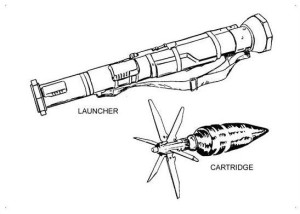 The article also exposed that a mock NRC assault on the facility before September 11 revealed that to “penetrate the perimeter fence and breach the access control barrier” took just 18 seconds. At least now, the article reported, SONGS had automatic gun-toting personnel in and outside of the place.
The article also exposed that a mock NRC assault on the facility before September 11 revealed that to “penetrate the perimeter fence and breach the access control barrier” took just 18 seconds. At least now, the article reported, SONGS had automatic gun-toting personnel in and outside of the place.
But did they? Have security personnel at San Onofre been packing machine guns to protect against terrorist attack on a high value target since 9/11, nearly a dozen years ago? According to a June 5 NRC press release, they couldn’t have.
“The Nuclear Regulatory Commission today issued an Order designating 10 nuclear facilities in New York, Maryland, Virginia and California as eligible to apply for authority to permit their security forces to possess and use firearms and related devices despite local, state or federal laws and regulations restricting their use,” said the press release.
The NRC just gave the opportunity for SONGS and Diablo Canyon 250 miles up the California coast to “apply” for machine guns and the like. Nine other nuclear facilities in New York, Maryland and Virginia would also be eligible for the heavy firepower. The directive specifically says that the “spent fuel storage installations at Diablo Canyon and Calvert Cliffs, which are licensed separately, are also included.”
“The Energy Policy Act of 2005 gave the NRC authority to permit security forces at NRC-licensed facilities to possess and use firearms, ammunition and large-capacity ammunition feeding devices in the performance of their official duties regardless of local, state or federal restrictions on their use,” said the document.” This “pre-emption authority” became effective with the 2009 publication of guidelines on the use of firearms at NRC-licensed facilities, which were approved by the NRC and the Department of Justice. Today’s Order spells out how the designated facilities would apply for pre-emption authority, should they desire to do so, and how the NRC would review any applications. It also requires the designated facilities to perform background checks to verify their security personnel are not prohibited from carrying firearms by state law.”
Astonishingly, this means that what the LA Weekly learned and reported in October 2001 wasn’t true and couldn’t have been true for over twelve years since then. It also means that San Onofre is lightly defended when considering the havoc a terrorist attack could wreck should there be an attack the two spent fuel pool buildings, clearly identified in SCE’s SONGS virtual tour video.
When SONGS opened in 1968, nobody envisioned the terrorist threat that would come to define today’s security challenges. Yet only a few years later, in 1972, three terrorists hijacked a Southern Airways flight with handguns and hand grenades and threatened to fly the plane into a nuclear power plant in Oak Ridge, Tennessee. When they got within 8,000 feet of the site, Southern Airways and the FBI agreed to meet their demands. Though the hijackers were eventually apprehended, it was their threat to fly into a nuclear reactor that directly led to the U.S. law that all passengers be physically screened beginning January 5, 1973.
It was box cutters, however, that doomed the four American Airline flights in September 2011. Yet as horrific as the 9/11 terrorists attacks on the U.S. were, al-Qaeda had initially planned for them be much worse. The 911 Commission stated that al-Qaeda originally planned to hijack ten airplanes and crash them into gas stations, bridges, and nuclear power plants on both coasts. Indeed, a top al-Qaeda operative, Khalid Sheikh Mohammed, confirmed that the initial targets for the 9/11 attacks were two nuclear power plants – but Bin Laden ultimately ruled against such an attack due to concerns it would “get out of hand.”
Naturally, SONGS security from terrorism was on many people’s minds twelve years ago as this passage in the 2001 LA Weekly exposé showed:
Nuclear-power facilities are vulnerable despite having walls of thick concrete meshed in re-bar. If the electrical power lines to a plant were cut, the reactor would automatically shut down unless relatively unfortified backup generators were disabled. This could lead to a meltdown. Likewise if saboteurs cut off or clog the water supply to the reactors. Spent nuclear-fuel dry casks and cooling ponds for “hot” fuel rods could be set afire with incendiary weapons, which make them the most vulnerable targets at the plants.
Not only has the knowledge of this threat been exposed before, the information has been ignored as evidenced by scant indications of increased SONGS security. Now with it apparent that the site has been without heavy weaponry since a month after 9/11 despite information to the contrary, other common sense measures are also not evident at the site.
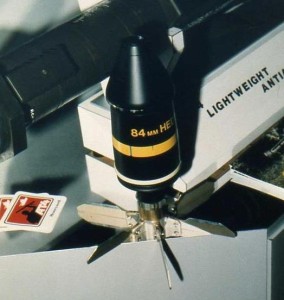 The NRC learned little from 9/11. Prior to that terrible day, the NRC’s regulations required nuclear power plants to be able to protect against just three external attackers are with no more than machine guns. Dan Hirsch explained the regulations at a 2010 lecture at the University of Southern California attended by EnviroReporter.com:
The NRC learned little from 9/11. Prior to that terrible day, the NRC’s regulations required nuclear power plants to be able to protect against just three external attackers are with no more than machine guns. Dan Hirsch explained the regulations at a 2010 lecture at the University of Southern California attended by EnviroReporter.com:
“The NRC said there will absolutely never be a terrorist event involving more than three. What happened on 9/11? There were 19. Did they come in by foot? No. Did they use instruments only up to semi-automatic weapons? No. They used jumbo jets. They operated by more than one team. And they contemplated hitting a nuclear power plant as part of the original attack. But apparently Bin Laden said ‘no, let’s do that on the next attack.’ I did a petition for rule making at the NRC years ago and kept repeating it, that they should protect against larger numbers, they should protect against truck bombs. They finally got that approved, only after truck bombs were used at the World Trade Center. So they now protect against truck bombs but there’s still no requirement to protect from an attack from the air, and no requirement to protect against a 9/11 sized attack. We have increased it from the three, to, how many? Five. And the argument there is that 9/11 wasn’t really just one terrorist attack, but four. There were no more than five terrorists per plane.”
Indeed, a study by the Government Accountability Office concluded that the NRC based its revised rules “on what the industry considered reasonable and feasible to defend against rather than on an assessment of the terrorist threat itself.”
Even before 9/11, Hirsch had warned of these dangers in a 1987 report for the Washington D.C.-based Nuclear Control Institute entitled The Truck Bomb and Insider Threats to Nuclear Facilities. “A traditional approach to the insider problem, the two-person rule (prohibiting unaccompanied presence in vital areas), has met with great resistance from industry and within the NRC,” the report said. “Even existing regulations designed to provide some measure of protection against insiders seem to be enforced and complied with inadequately. Violations of access controls are commonplace, and the small fines imposed when such violations are detected seem to offer little deterrent to repetition of the infractions.”
Two years after 9/11 Hirsch, along with nuclear safety engineer David Lochbaum and Nuclear Control Institute president Edwin Lyman issued a scathing indictment of the agency’s laissez-faire attitude in The NRC’s Dirty Little Secret. “The NRC has not required nuclear facilities to guard against an assault by more than three attackers–and never with the help of more than a single insider,” the article said in the May/June 2003 edition of the Bulletin of Atomic Scientists. “In addition, for purposes of planning security, the NRC assumed that the three attackers would act as a single team, armed with nothing more sophisticated than hand-held automatic rifles.”
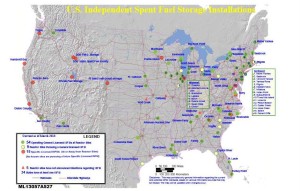 “But imagine if the public were told that more than 100 massive radiological weapons–‘dirty bombs’ on an incomprehensible scale–had been pre-emplaced in the United States, each capable of rendering an area the size of Pennsylvania uninhabitable for decades,” the piece said in closing. “Imagine further that the public learned that despite all the hype about homeland security, a powerful industry and its captured regulatory agency had succeeded in blocking security measures that would prevent those weapons from being used against the U.S. population. But one needn’t imagine–it’s the NRC’s latest dirty little secret.”
“But imagine if the public were told that more than 100 massive radiological weapons–‘dirty bombs’ on an incomprehensible scale–had been pre-emplaced in the United States, each capable of rendering an area the size of Pennsylvania uninhabitable for decades,” the piece said in closing. “Imagine further that the public learned that despite all the hype about homeland security, a powerful industry and its captured regulatory agency had succeeded in blocking security measures that would prevent those weapons from being used against the U.S. population. But one needn’t imagine–it’s the NRC’s latest dirty little secret.”
It’s no secret that the terrorist threat remains greater than ever as the closing of over 20 American embassies and consulates throughout the Middle East, Africa and East Asia as this summer attests. Continued drone strikes in Yemen and Pakistan, while effective in obliterating top terrorist operatives, have engendered deep hostility in the Muslim world. Potential military strikes against Syria led to it and its ally Iran making threats against America. And disaffected “homegrown” terrorists like the Boston bombers are likely lying in wait right now.
Our intelligence agencies have shown anything but intelligence. Edward Snowden released a treasure trove of National Security Agency information, including the revelations that the NSA has intercepted every communication of every American and spied intensely on even our closest allies, yet the all-seeing NSA managed to miss Snowden himself.
In its hubris, the nuclear industry and its federal overseers have already pre-placed terrorist targets throughout the country. All the intelligence gathering in the world can’t stop attacks on these targets and the Americans they will claim as casualties. The Boston bombings showed the impotence of the domestic spying effort other than to take mountains of useless information and stuff it into new NSA super-snooper buildings in Utah.
If common sense has taken leave of the federal government strategically, it can’t afford to be lost on tactical defense of the country. It has failed, however, when it comes to the both the tactical and strategic protections of our most vulnerable and exploitable weaknesses, America’s spent nuclear fuel pools.
EnviroReporter.com doesn’t expect SCE to take new observations about San Onofre’s acute vulnerabilities any more seriously than it did when the LA Weekly was told factual inconsistencies in 2001. The NRC doesn’t want to make industry pay for security it doesn’t think it needs – and of course wants to protect the industry from ever-growing public opinion that nuclear power simply isn’t safe. It looks bad.
Nevertheless, dismissing the need for immediate and robust measures to dry cask as much of SONGS spent nuclear fuel possible and then secure it as strongly as possible would be unwise at best, disastrous at worst.
Keeping SONGS Safe
Twelve years after 9/11 and two wars later, America’s strategic situation has changed substantially. The world is a much more dangerous place and in that time we have made more enemies than friends.
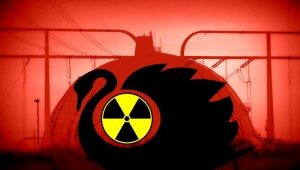 Soft targets with big assets are obvious choices for terrorists. If a terrorist organization wanted to mount a force on force assault in this country, what place better than along the border with a virtual narco state that has the weaponry, manpower and connections to mount such an attack in the United States.
Soft targets with big assets are obvious choices for terrorists. If a terrorist organization wanted to mount a force on force assault in this country, what place better than along the border with a virtual narco state that has the weaponry, manpower and connections to mount such an attack in the United States.
Not only are the manpower, weapons and motivation available on both sides of the United States and Mexico border, the plant itself is a sitting black swan. SONGS has multiple serious security issues, any number of which could be exploited to catastrophic effects.
So serious is the nuclear site’s current security posture, including built in place barriers, that an immediate posting of Marines outside of SONGS is needed in order to even begin to address a broad range of tactical issues. That will probably not happen thanks to a nuclear industry that doesn’t see any problems and a regulatory bureaucracy which encourages unsafe practices even as it is charged with protecting America from a nuclear reactor or spent fuel pool disaster.
But the threat is all too real. It wouldn’t even take any training past aiming straight or knowing how to jump or cut through three fences. Such is the site setup of SONGS that a terrorist could inflict maximum damage on the ‘wet’ and ‘dry’ spent fuel rods and get away with it. No suicide bombers required.
The San Onofre Nuclear Generating Station might be the most exposed power plant in the nation. Hard on the heavily traveled San Diego Freeway, thousands of people pass within eyeshot of the SONGS Units 2 and 3’s spent fuel pools (SFPs) every day and night.
It’s no secret that they are there. In late November 2012, Southern California Edison announced that it had created a “virtual tour” which clearly points out the SFPs as does a SCE YouTube SONGS video.
A comprehensive analysis of the San Onofre Nuclear Generating Station’s weaknesses is much easier now than it was in 2001 when this reporter freelanced for the LA Weekly and first reported on SONGS. An Internet search shows just how vulnerable the plant is to terrorist attack. Google Earth, Google Maps and even Wikipedia provide detailed images of the layout and operation of SONGS. There is no end to the online information and resources on San Onofre and dozens of other nuclear reactors and their spent fuel pools (SFPs) across America.
Potential terrorists have access to this information too. That can’t be controlled. What can be controlled is action to assure our nuclear power plants, and especially their spent fuel pools, are protected like the gold at Fort Knox. A successful attack is so unacceptable in consequences that only a 100 percent sure protective envelope is necessary to clip unforeseen black swan events.
The supposed good guys in America’s 16 intelligence agencies may already know the information this series contains considering it has access to every single click this reporter and his readers have ever made for several years now if the leaked Snowden documents are of any measure. One piece of intelligence they may not know is that by removing the target, the terrorist has nothing to attack.
The billions of wasted taxpayer dollars waging this information war against its own people might be better spent making obvious targets hard. Not just virtually hard but real boots on the ground hard if need be. Reverse engineering the threat is the logical place to start, beginning with which targets are the softest in this country that have the biggest for the buck.
The softest targets are nuclear reactor spent fuel rods in cooling pools with dry casked radioactive spent fuel rods a not too close second. Nuclear reactors themselves are heavily fortified concrete enclosures and would require much heavier weaponry to successfully attack than the soft sites analyzed in this series.
SONGS’ Soft Spots
What San Onofre lacks in an effective defensive posture to successfully fend off terrorist attacks could be made right by use of the neighboring thousands of Marines on duty just down the Old Highway 101 road that runs along the eastern wall of SONGS between it and the San Diego Freeway. Unlike any other reactor and spent fuel pool complex in the country, San Onofre sits on Marine Corps land with 100,000 people on the base during daytime including 19,000 members of the First Marines Expeditionary Force. I MEF is made up of the 1st Marine Division, 3rd Marine Aircraft Wing and the 1st Marine Logistics Group.
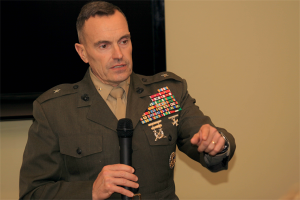 Recommending how to mitigate threats before exposing them is this series’ way of assuring the reader that the frightening attack scenarios exposed can be effectively dealt with. The weaknesses identified by EnviroReporter.com at San Onofre could be addressed immediately by Camp Pendleton commander Brigadier General Vincent A. Coglianese. With I MEF’s land, sea and air capabilities, and a concerted effort to unload San Onofre’s spent nuclear fuel rods into dry cask storage moved over to the eastern side of SONGS, the threat could be remedied in the short, medium and long term.
Recommending how to mitigate threats before exposing them is this series’ way of assuring the reader that the frightening attack scenarios exposed can be effectively dealt with. The weaknesses identified by EnviroReporter.com at San Onofre could be addressed immediately by Camp Pendleton commander Brigadier General Vincent A. Coglianese. With I MEF’s land, sea and air capabilities, and a concerted effort to unload San Onofre’s spent nuclear fuel rods into dry cask storage moved over to the eastern side of SONGS, the threat could be remedied in the short, medium and long term.
SONGS straddles the San Diego Freeway with the reactors and spent fuel pools on 84 acres along the Pacific including 600 feet of ocean frontage. Power lines cross the interstate and skirt the eastern part of the plant called the Mesa Complex covering 130 acres. Though it’s on a Marine base, this part of Camp Pendleton seemed lightly patrolled during EnviroReporter.com visits to the area and adjacent public beaches.
Indeed, the huge electric towers on the east side of Interstate 5 seem as vulnerable to sabotage as they were in 2001 with no barbed wire enclosures with ground sensors and cameras connected with Mesa Complex security. Dynamiting these towers near the plant or farther up in the immediate hills does not seem a likely terrorist endeavor. The electricity can be quickly restored and toppling towers do not make most Americans cower in fear.
Destroying spent fuel pools would. San Onofre’s SFPs are in two buildings defenseless to the kind of attack that can be only stopped before it gets started: missile attack. SONGS is a sitting black swan for this kind of terrorist strike which could be mounted from a wide choice of positions all easily accessible by the public.
Shoulder-fired rocket launchers are available on the streets of America. At no less than three guns-for-cash police buybacks recently, three rocket launchers showed up including a Stinger. These weapons are already in the hands of drug cartels which operate south of the Mexico-United States border 76 miles away. The U.S. has thwarted at least one Iranian plot to use Mexican cartel hit men on this side of the border to kill the Saudi Arabian ambassador, according to the Federal Bureau of Investigation.
The weapons and the men that could use them are all in place. So are the targets. It shouldn’t take pestering every American agency responsible for keeping us safe to see that there is a clear and present danger in SONGS’ proximity to heavily used roadways where a missile attack could be successfully launched close to the target SFPs. No other reactor in America is as vulnerable to such an attack.
Southern California Edison seemed oblivious to any kind of threat at all when it posted on YouTube the revealing San Onofre Nuclear Generating Station – Video Tour October 23, 2012. The video posting came in the wake of a serious sabotage event at SONGS, where coolant was poured into an emergency backup generator’s oil reserve for Unit 3. San Diego’s East County Magazine called SCE’s making public the video tour “troubling” in a November 30 article describing the sabotage.
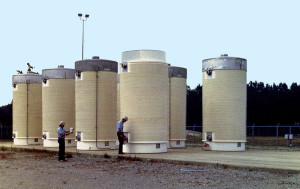 SONGS is squeezed in between the San Diego Freeway and the Pacific Ocean with little natural protection against a devastating missile attack against its SFPs or a catastrophic backpack plastic explosives strike against its Independent Spent Fuel Storage Installation (ISFSI) where dozens of dry casks sit lightly guarded. SCE’s video tour and that detailed SONGS Wikipedia photo from May 2012 leave little to the imagination when it comes to San Onofre’s security shortcomings. But SONGS could protect its assets in a way that other nuclear sites across the country don’t have because of occupying Marine Corps land.
SONGS is squeezed in between the San Diego Freeway and the Pacific Ocean with little natural protection against a devastating missile attack against its SFPs or a catastrophic backpack plastic explosives strike against its Independent Spent Fuel Storage Installation (ISFSI) where dozens of dry casks sit lightly guarded. SCE’s video tour and that detailed SONGS Wikipedia photo from May 2012 leave little to the imagination when it comes to San Onofre’s security shortcomings. But SONGS could protect its assets in a way that other nuclear sites across the country don’t have because of occupying Marine Corps land.
Missile attack on SFPs is not a new major concern. The Maryland-based Institute for Energy and Environmental Research released a March 23, 2010 paper signed by dozens of environmental and nuclear watchdog groups called Principles for Safeguarding Nuclear Waste at Reactors. The position paper advocated moving cooled spent fuel rods from SFPs to dry casks to be stored in hardened, onsite storage (HOSS) facilities to guard against attack.
“The overall objective of HOSS should be that the amount of releases projected in even severe attacks should be low enough that the storage system would be unattractive as a terrorist target,” the so-called ‘HOSS Principles’ say. “Design criteria that would correspond to the overall objective must include: [R]esistance to severe attacks, such as a direct hit by high-explosive or deeply penetrating weapons and munitions or a direct hit by a large aircraft loaded with fuel or a small aircraft loaded with fuel and/or explosives, without major releases. Placement of individual canisters that makes detection difficult from outside the site boundary.”
SONGS fails on all counts. Its two SFPs are the large rectangular buildings attached to the 6-foot thick domes of the reactors. They are easily within the line of sight for the 11,500 southbound cars that pass the plant each peak hour according to the 2012 Traffic Volumes on California State Highways compiled by the state Department of Transportation.
 None of these vehicles are stopped and checked for weapons, obviously. The traffic in the northbound lanes is impeded a mile south of San Onofre by the California Border Patrol San Onofre Inspection Station usually and has even higher volume than southbound traffic.
None of these vehicles are stopped and checked for weapons, obviously. The traffic in the northbound lanes is impeded a mile south of San Onofre by the California Border Patrol San Onofre Inspection Station usually and has even higher volume than southbound traffic.
A 53-foot long trailer stopped at the station August 29 was found to have more than nine tons of marijuana worth $14 million. Somehow the huge load had made it over the border but was stopped just shy of San Onofre illustrating just how porous the border is that the truck got into the United States in the first place.
“This seizure by our agents helps weaken the transnational criminal organizations who attempt to use our roadways to conduct their illegal activities,” San Diego Sector Chief Patrol Agent Paul Beeson said, confirming the transnational aspect of the cartels’ reach. That does not bode well for San Onofre but it is no surprise either.
A vehicle pulled over to the shoulder in the southbound lanes of the San Diego Freeway across the railroad tracks and Old Highway 101 will find itself just about 560 feet from one of the spent fuel pool buildings. Exit El Camino Real and pull up on Old Highway 101 next to the plant wall and the distance shrinks to about 360 feet.
A half mile of the freeway in southbound lanes means a long shoulder where motorists sometimes break down and speeders are pulled over by the California Highway Patrol. This area also has an unobstructed view of the SFPs buildings. This makes them vulnerable to a hit and run or sustained terrorist rocket attack from the shoulder of the road.
Removing sightlines is imperative in situations where the targets are essentially unprotected save for the SFPs buildings’ integrity. There are no view-blocking fences along Interstate 5 in this stretch. That could be quickly remedied by installing Caltrans fencing with green fabric between the southbound lanes’ shoulder and the railroad tracks running for about half a mile adjacent San Onofre. The only thing drivers would miss would be the impressive site of SONGS on the Pacific. That is precisely the goal.
The SONGS perimeter wall along Old Highway 101 is even more perilous. It is not tall enough to block someone from standing in the bed of a pickup and firing a rocket propelled missile into one or both SFPs. The public road leads to a public beach south of the plant and is not controlled nor is it covered in cameras. Again, an effective and quick way to mitigate this threat is through additional chain link with privacy slats fencing along the perimeter wall adding at least four feet to inhibit sightlines
Rocket Launcher Risk
A successful strike on SONGS’ spent fuel pools could devastate Southern California, the ultimate price paid for buying the utopian dream of limitless “clean” nuclear energy. That dream will turn a nightmare should these vulnerable SFPs get successfully attacked with substantial force. In the case of SONGS, that would be two attackers at a minimum with a rocket launcher with a HESH missile, one to fire the simple to use weapon and one as the lookout and driver.
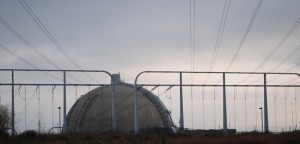 Fairly inexpensive rocket launchers could easily blow the smithereens out of the flat-sided SFPs buildings at SONGS depending on the armaments. The most common rocket launcher in the U.S. is the AT4 which is an 84-mm portable and unguided missile firing weapon made in Sweden. The AT-4 is 40 inches long and weighs just 15 pounds but with an Anti-Structure Tandem (AST) warhead, the weapon would be San Onofre’s worst nightmare.
Fairly inexpensive rocket launchers could easily blow the smithereens out of the flat-sided SFPs buildings at SONGS depending on the armaments. The most common rocket launcher in the U.S. is the AT4 which is an 84-mm portable and unguided missile firing weapon made in Sweden. The AT-4 is 40 inches long and weighs just 15 pounds but with an Anti-Structure Tandem (AST) warhead, the weapon would be San Onofre’s worst nightmare.
The AT-4 is simple to use and requires little training. Its maximum effective range is 328 yards which is more than enough distance for any attack from the San Diego Freeway or Old Highway 101.
Warheads specifically designed to destroy fortified bunkers are made for the AT-4. The AST warhead has two settings, one for obliterating concrete and iron reinforced bunkers as well as “mouse holing” through a building to allow soldiers to storm through in urban combat.
The spent fuel pools buildings were not designed to resist attacks from weapons such as rocket launchers. No study has been performed to see how the SFPs buildings would stand up to such an attack so is not certain what a rocket’s destructive potentially could be. Judging from the videos of such a weapon available online, the structures would do well to not become the first test cases.
Marines at Camp Pendleton have trained extensively with AT-4 rocket launchers as an August 2009 YouTube video shows. The soldiers were using what appeared to be a high explosive anti-tank (HEAT) round. If the rocket launcher was equipped with an AST, it would be far more destructive to edifices like the ones that house San Onofre’s SFPs.
“The AT4 CS AST is optimized for defeating urban targets such as reinforced concrete walls, earth and timber bunkers, light armoured vehicles,” says SAAB, its Swedish manufacturer. “It can be fired from concealed spaces and its tandem grenade provides the dismounted soldier with a unique amount of firepower.”
This weapon can be fired from inside a vehicle outside of SONGS making a getaway all that much more plausible as well as making the menace that much more perilous. The bunker-busting missile is of a type called a high-explosive squash head (HESH) though referred to in the U.S. as a High Explosive, Plastic (HEP) round. The low-velocity projectile smooches plastic explosive against the a structure, as it does 45 seconds into the demonstration video on the SAAB site, and spreads out to form a disk of explosive on the structure. Milliseconds later, the base fuse detonates sending a shockwave into the edifice and sending a shock wave through the metal beyond the wall.
Of course such a weapon could also be used from a boat outside of SONGS if the conditions were right. The fact that the land-based approaches to attacking San Onofre are so open and unguarded, and the fact that the spent fuel pools buildings are somewhat hidden by the reactor domes from the sea, makes this an unlikely but not impossible terrorist attack scenario.
The National Academy of Sciences put to rest any doubts that SFPs were susceptible to a terrorist strike in a 2004 report:
 “A loss‐of‐pool‐coolant event resulting from damage or collapse of the pool could have severe consequences,” the NAS report stated. “It is not prudent to dismiss nuclear plants, including spent fuel storage facilities as undesirable targets for terrorists…under some conditions, a terrorist attack that partially or completely drained a spent fuel pool could lead to a propagating zirconium cladding fire and release large quantities of radioactive materials to the environment…Such fires would create thermal plumes that could potentially transport radioactive aerosols hundreds of miles downwind under appropriate atmospheric conditions.”
“A loss‐of‐pool‐coolant event resulting from damage or collapse of the pool could have severe consequences,” the NAS report stated. “It is not prudent to dismiss nuclear plants, including spent fuel storage facilities as undesirable targets for terrorists…under some conditions, a terrorist attack that partially or completely drained a spent fuel pool could lead to a propagating zirconium cladding fire and release large quantities of radioactive materials to the environment…Such fires would create thermal plumes that could potentially transport radioactive aerosols hundreds of miles downwind under appropriate atmospheric conditions.”
A 2005 Congressional Research Service study then looked at the risks of terrorism causing such a SFP breach and found that a “primary concern is whether terrorists could breach the thick concrete walls of a spent-fuel pool and drain the cooling water.”
Three years later, the Nuclear Regulatory Commission released a workbook looking at SONGS in a major earthquake for a Radiological Assessment System for Consequence Analysis (RASCAL 3.0.5). The September 2007 NRC study was developed for its Emergency Operation Center. The remarkably candid report postulated this terrifying scenario:
“The plant staff is calling you from San Onofre, Unit 2 because there has been an earthquake in the vicinity. The spent fuel pool has lost much of its water due to a large crack possibly flowing into a sink hole. Due to a malfunctioning pump, it has not been possible to provide enough water to make up for the loss. The water dropped to the top of the fuel at 8:49 A.M., and appears likely to continue dropping. Estimates are that the fuel will be fully uncovered by 11:00 A.M. The pool has high density racking and contains one batch of fuel that was unloaded from the reactor only 2 weeks earlier. (A batch is defined as one‐third of a core) Another batch was unloaded about a year before that, and 8 batches have been in the pool for longer than 2 years. The spent fuel building has been severely damaged and is in many places directly open to the atmosphere.”
This NRC theoretical scenario, were it to come true, according to Robert Alvarez’s SONGS spent fuel report for Friends of the Earth, would be catastrophic. “[W]ithin 6 hours of the pool drainage the spent fuel cladding would catch fire releasing approximately 86 million curies into the atmosphere,” Alvarez’s FOE report said. “Of that about 30 percent of the radio‐cesium in the spent fuel (roughly 40 million curies) would be released – more than released by all atmospheric nuclear weapons tests. The resulting doses to people within 1, 5 and 10 miles of the release are calculated at 5,200, 1,200 to 450 rems respectively. These are considered to be life‐threatening doses. Thyroid doses from inhalation of radioiodine are calculated at 39,000, 1,200 and 450 rems respectively. Doses from exposure to radioactive iodine would be enough to cause this organ to be destroyed.”
These astonishing numbers don’t take into account several factors that make such a disaster at San Onofre particularly treacherous. The NRC and Friends of the Earth estimates are based on one spent fuel pool losing all its water with the corresponding consequences. SONGS has two SFPs in two buildings as Southern California Edison shows in its SONGS virtual tour video.
Both SFPs buildings could be attacked from the same spot terrorists could pick from along long stretches of unguarded roads. If both buildings were destroyed by these weapons available on both sides of the border, the result would clearly be twice the permanent destruction of huge swaths of Southern California, including our biggest Marine base, and lethal radioactive doses to hundreds of thousands of defenseless Americans.













This is a very important article with excellent analyisis of the security and safety situation at San Onofre nuclear plant and the nuclear industry in general.
Great work using open intelligence sources to point out the corruption at SCE/Nuclear Industry, that is putting the lives of everyone at risk simply for the satisfaction of greed and profits.
This in depth article deserves to be broadly disseminated, thank you for the work you have put into this informative piece.
Terrorists, psychos, wars and disgruntled crazy [furloughed] employees, not to mention mother nature, are extremely unpredictable.
Nuclear Power cannot, should not, operate with ‘unpredictable’ risks that carry with them the incalculable insidious destructive power to harm innocent life on such an unimaginable massive long term scale.
Seriously, I don’t understand why don’t people get this?
😉
In reading this article, some things become very clear. There are many reasons to shore up security at particularly vulnerable nuclear sites. For a private company, such as SCE, security is not their top priority. A private company’s top priority is, not surprisingly, profit. Security is a cost, and costs subtract from profit. The NRC understands this, and makes security scenarios that will not cost nuclear plant operators too much money. The article also references Osama Bin Laden and his thinking on nuclear targets. I was unaware that Osama Bin Laden recommended against such targets (at that time). That is very interesting. Now that the US has removed Osama Bin Laden from the equation, the US may have removed one of the individuals who provided an argument against thinking of nuclear sites as targets. Feeling more uneasy now? You should. Michael Collins has painted a worrisome picture of the future. Specific vulnerabilities, methods of attack, and weapons that could be used, are all very frightening. I suspect the terrorists don’t really need any help thinking up ways to attack a nuclear site. The real danger lies more fundamentally within the mindset of the terrorists. Do they understand such an attack could “get out of hand”, producing consequences that could spiral out of control? Consequences that would not be in the terrorists best interests? From reading this article, I think Osama understood that. But Osama is no longer there to prevent the unthinkable. That “mindset” gateway to nuclear terrorism may now be open. That is what should worry us most. Thank you Michael for your article. Very thought provoking. Very scary actually. I won’t be sleeping as well tonight. America shouldn’t either.